¡Suscríbete! ¡Envíalo! ¡Añadir al carrito! ¡Aprende más! ¡Regístrate!
¿Qué tienen en común todos estos? Son todos tipos de llamadas a la acción que estoy seguro de que has visto en todos tus sitios web favoritos. Muchos de los cuales probablemente has hecho clic. A medida que avanzas en la construcción de sitios web, eventualmente querrás agregar llamadas a la acción (CTA) en varias páginas de tu sitio para interactuar con tus visitantes.
¿Qué es una llamada a la acción?
Una llamada a la acción (CTA) es parte de un sitio web, pieza de contenido o anuncio que anima al espectador a hacer algo, como hacer clic, registrarse o descargar. Un CTA puede ayudar a convertir un visitante en un cliente potencial o impulsar diferentes acciones.
Cada vez que te has registrado para unirte a un boletín de correo electrónico, creado una nueva cuenta, iniciado sesión en una cuenta preexistente o incluso añadido un nuevo artículo a tu carrito, has utilizado un CTA para hacerlo. Es importante que tu sitio web tenga varias llamadas a la acción. Por ejemplo, un CTA puede animar a una persona a hacer clic, visitar una tienda, realizar una compra, iniciar una descarga o visitar una tienda en línea.
No solo impulsan a tus visitantes a potencialmente realizar una conversión, sino que también pueden aumentar la tasa de clics de tu sitio web, que es el número de páginas que un usuario promedio ve cuando visita tu sitio. Es común que las empresas utilicen software de captura de clientes potenciales para gestionar mejor los clientes potenciales que llegan a través de los CTAs en los sitios web.
Quieres que un visitante haga más que leer tu página de inicio y se vaya. Los CTAs son una excelente manera de asegurar que un usuario haga clic y vea varias páginas en tu sitio web.
Cómo escribir un CTA
Un CTA convincente que convierta comienza con la redacción correcta. Ten en cuenta estos consejos mientras escribes tu próxima llamada a la acción.
- Usa palabras de acción fuertes: Compra, reserva, ahorra, comienza, suscríbete, dona, descarga, aprende más y desliza hacia arriba.
- Provoca emoción o entusiasmo: Compra ahora y obtén un 40% de descuento, oferta por tiempo limitado, no te lo pierdas y encuentra una solución hoy.
- Inclínate hacia la urgencia: La venta termina pronto, ahora hasta el lunes, solo 24 horas y solo este fin de semana.
- Usa tu propia marca: Encuentra el software adecuado con G2.
¿Quieres aprender más sobre Software de Captura de Clientes Potenciales? Explora los productos de Captura de clientes potenciales.
Tipos de llamadas a la acción
Hay muchos tipos de CTAs que podrías elegir tener en tu sitio web, todos con un objetivo final diferente. Debido a esto, tu marca puede colocar estratégicamente múltiples CTAs en diferentes áreas de tu sitio web, en plataformas de redes sociales y anuncios.
Aquí hay algunos ejemplos de los tipos de CTAs que puedes implementar y las marcas que lo están haciendo bien.
Generación de clientes potenciales
¿Interesado en convertir visitantes del sitio web en clientes potenciales? Los CTAs son una excelente manera de hacerlo. Este tipo de llamada a la acción debe colocarse en un área de tu sitio web donde haya un alto porcentaje de nuevos visitantes. Si tu sitio web tiene un blog, considera agregar un CTA al final de una publicación de blog o un banner flotante al lado para que los espectadores puedan suscribirse a tu contenido.
Para asegurarte de que tus visitantes noten estos, hazlos llamativos y dales un mensaje que le diga al usuario por qué deberían hacer clic en ellos. Para asegurarte de capturar cada cliente potencial que llegue a través de tus CTAs, consulta nuestra lista de mejores software de seguimiento de llamadas entrantes. Estas herramientas ayudan a tu equipo a rastrear llamadas, medir la efectividad de la campaña y asegurar que ningún prospecto se pierda.
Un ejemplo de un CTA generador de clientes potenciales se puede encontrar a continuación en el sitio web de Brianne Fleming. El CTA utiliza una referencia de la cultura pop para entusiasmar a los lectores a recibir un cuaderno de descubrimiento de nicho. El CTA da un paso más al cambiar el texto del botón: en lugar de algo genérico o sobreutilizado, se abre con ¡Dame, dame! para atraer emoción.
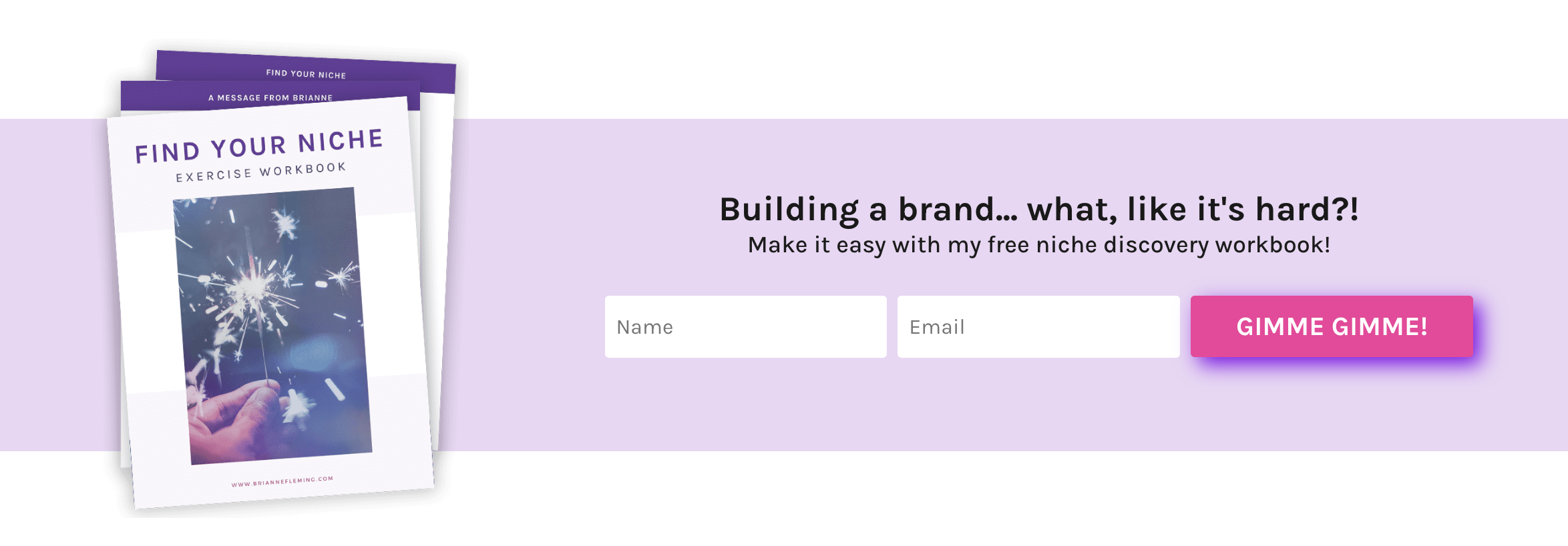
Fuente: Brianne Fleming
Además de los CTAs de generación de clientes potenciales en sitios web, también se pueden encontrar dentro de anuncios, especialmente en redes sociales. Aquí hay un ejemplo de uno del New York Times que no solo ayuda a generar clientes potenciales, sino que también informa a los clientes que ahorrarán dinero con un descuento especial si actúan rápido.
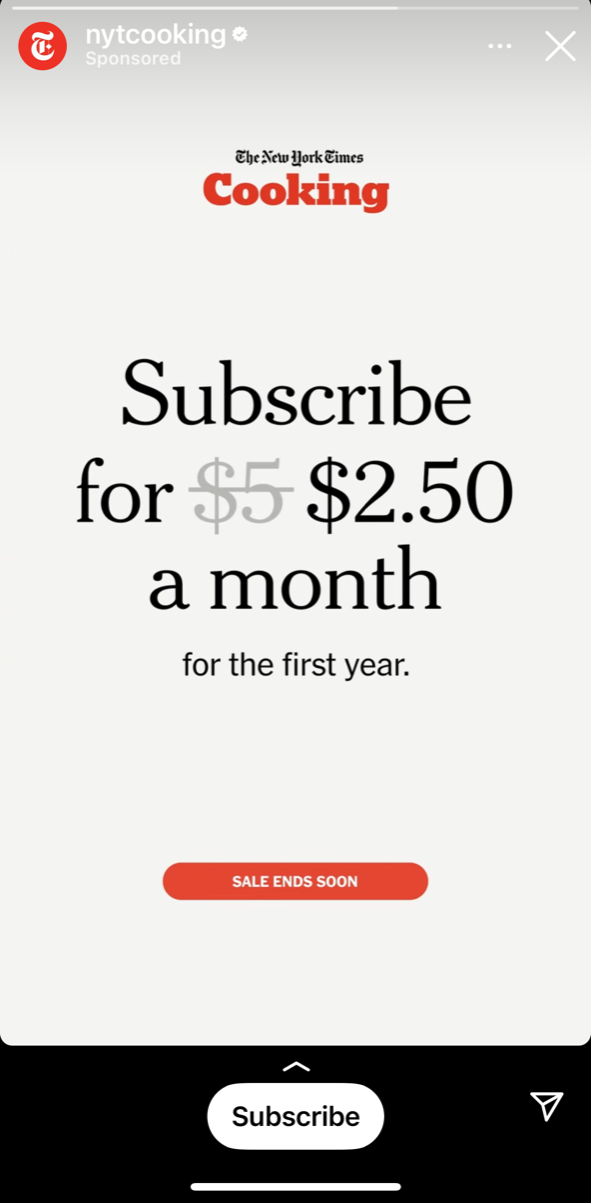
Fuente: Instagram
Envío de formularios
Una vez que un usuario hace clic en tu CTA de generación de clientes potenciales, probablemente será llevado a una página de destino que contiene un formulario, que deberá completar antes de convertirse oficialmente en un cliente potencial.
Este es un proceso de dos pasos porque una vez que completan el formulario, tienen que hacer clic en el botón de enviar para enviar su información de contacto a tu base de datos.
Es importante que involucres aún más a este usuario con un formulario atractivo y directo al grano. Considera cambiar el aburrido y sobreutilizado botón de “enviar” por algo más y proporcionar más información.
Un ejemplo de una marca que utiliza un envío de formulario es la tienda de ropa en línea Madewell, que invita a los visitantes con beneficios exclusivos si se registran para recibir sus correos electrónicos.
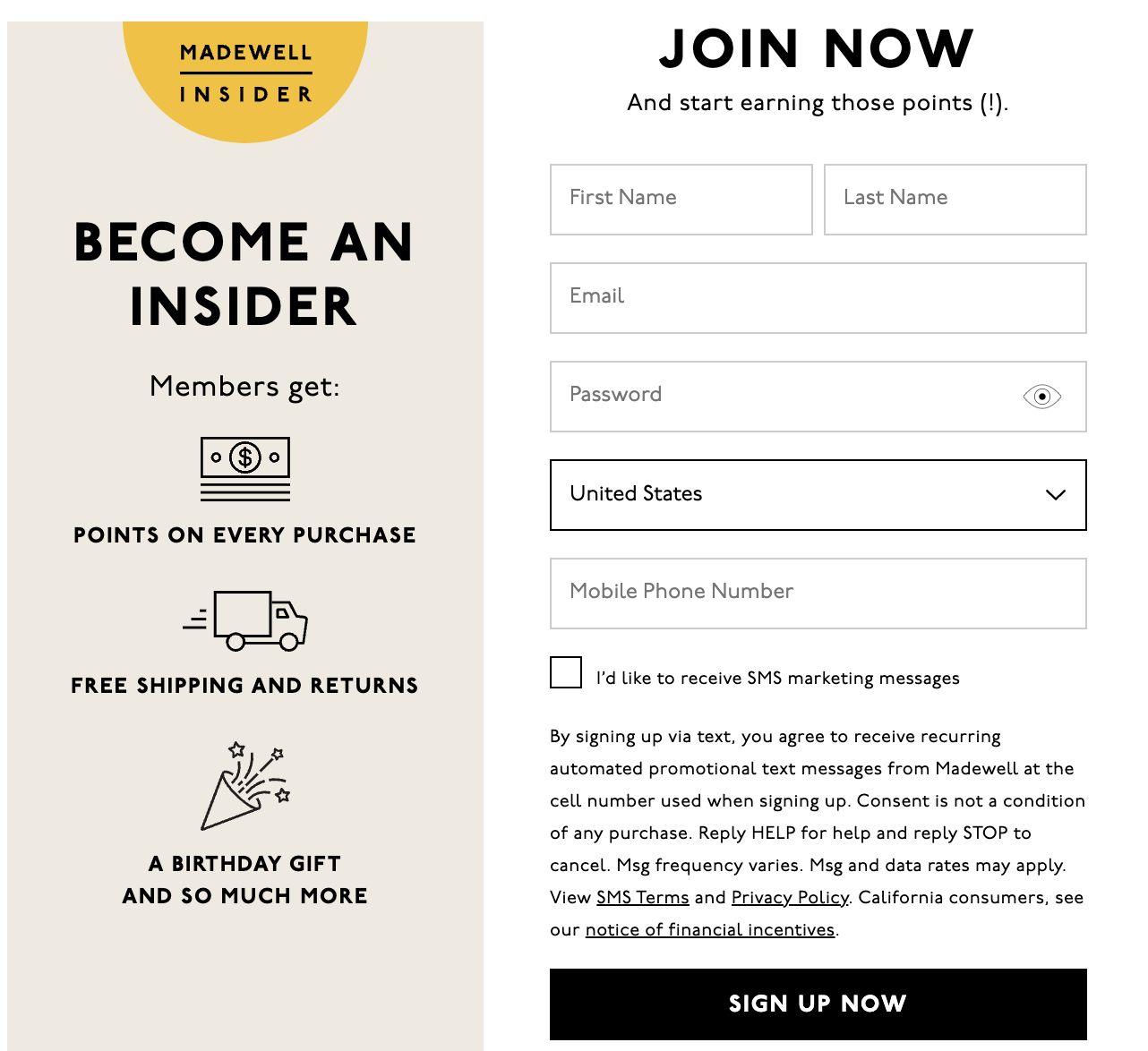
Fuente: Madewell
Aprende más
El botón “Aprende más” es esencial para cualquier página de tu sitio web que muestre contenido. Esto podría ser tu blog, página Sobre Nosotros, recortes de prensa o artículo destacado.
Este tipo de CTA es una excelente manera de lograr que los lectores continúen leyendo contenido que no está completamente mostrado en tu página de inicio. Si la publicación es particularmente larga, incluye el primer párrafo para captar la atención de tus lectores, seguido de un botón de “Aprende más” o “Leer más” para ser llevado a la pieza completa.
Además de liberar espacio en tu página de inicio para otro contenido, este tipo de CTA asegura que artículos particulares obtengan métricas específicas, como tráfico, en lugar de que los usuarios simplemente lean la publicación en su totalidad en una página de inicio.
Un ejemplo es cómo la página de inicio de G2 tiene un botón de “Aprende más” que los espectadores pueden hacer clic para obtener más información sobre G2 Track, nuestra plataforma de gestión de SaaS que ayuda a las empresas a gestionar y optimizar su pila de software.
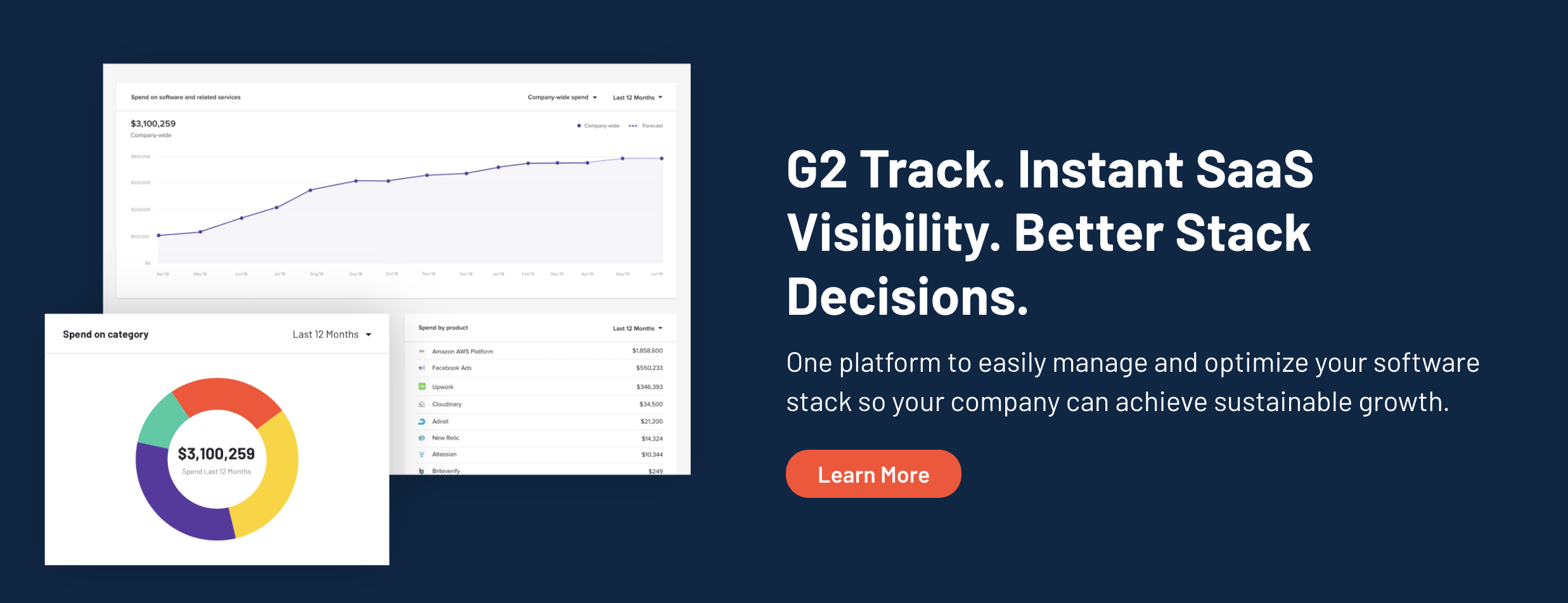
Fuente: G2
Compartir en redes sociales
Vivimos en una época en la que las redes sociales no son solo un lugar divertido para compartir tus pensamientos. También se pueden usar para promocionar tu sitio web y todas sus publicaciones y actualizaciones.
Una de las llamadas a la acción más fáciles anima a los visitantes a compartir una parte del contenido de tu sitio web con sus amigos a través de las redes sociales. Esta es una manera rápida y fácil para que clientes potenciales, clientes existentes y visitantes del sitio web interactúen con tu marca de una manera de bajo compromiso.
Ya sea un emocionante recorte de noticias, un anuncio de un nuevo producto o un artículo que tomó tiempo y investigación extra, un botón de compartir en redes sociales es un excelente CTA. A continuación, puedes ver que nuestro artículo sobre dominar las redes sociales y conectar con tu audiencia tiene botones de compartir en redes sociales, lo que permite a los lectores publicar el artículo en su LinkedIn, Twitter o Facebook, además de compartir a través de correo electrónico o un enlace directo.
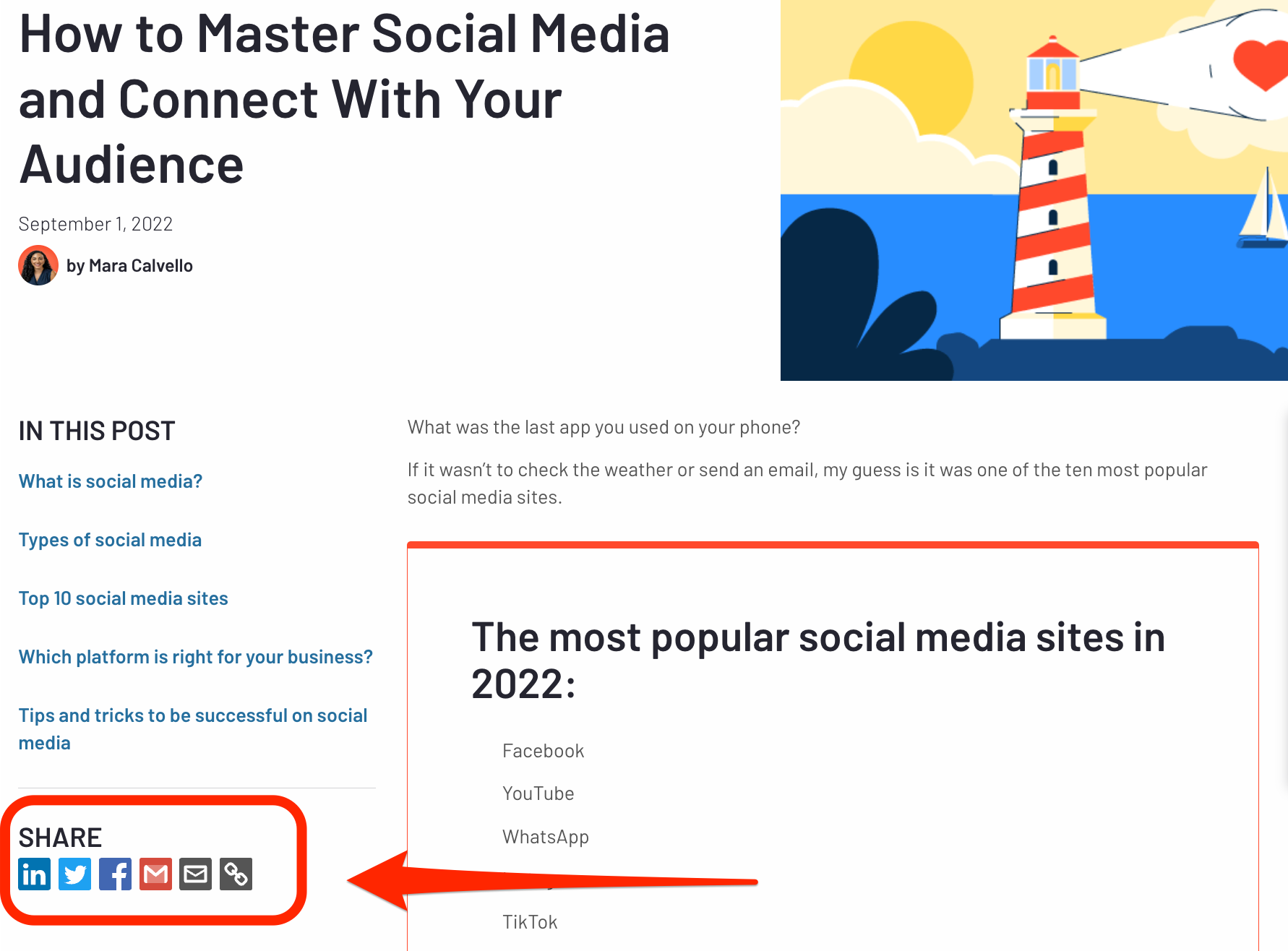
Fuente: G2
Promoción de eventos
¿Tu empresa está organizando un gran evento o conferencia? ¿Quieres que personas reales asistan a este evento o conferencia? Si es así, un CTA que promueva este evento y aumente su conciencia es absolutamente imprescindible para tu sitio web. No solo puedes usarlo para impulsar la venta de entradas, sino que este CTA se puede usar para atraer a un tipo específico de audiencia.
Si quieres que tus clientes asistan al evento, coloca este CTA en la página de inicio de sesión o de pago. Si es un evento para clientes potenciales, considera agregar este CTA en una barra lateral de tu blog o en el artículo que recibe más tráfico.
A continuación, verás un ejemplo que presenta nuestra conferencia Reach 2022, que insta a los espectadores a confirmar su asistencia con anticipación para escuchar más sobre el pulso del software.
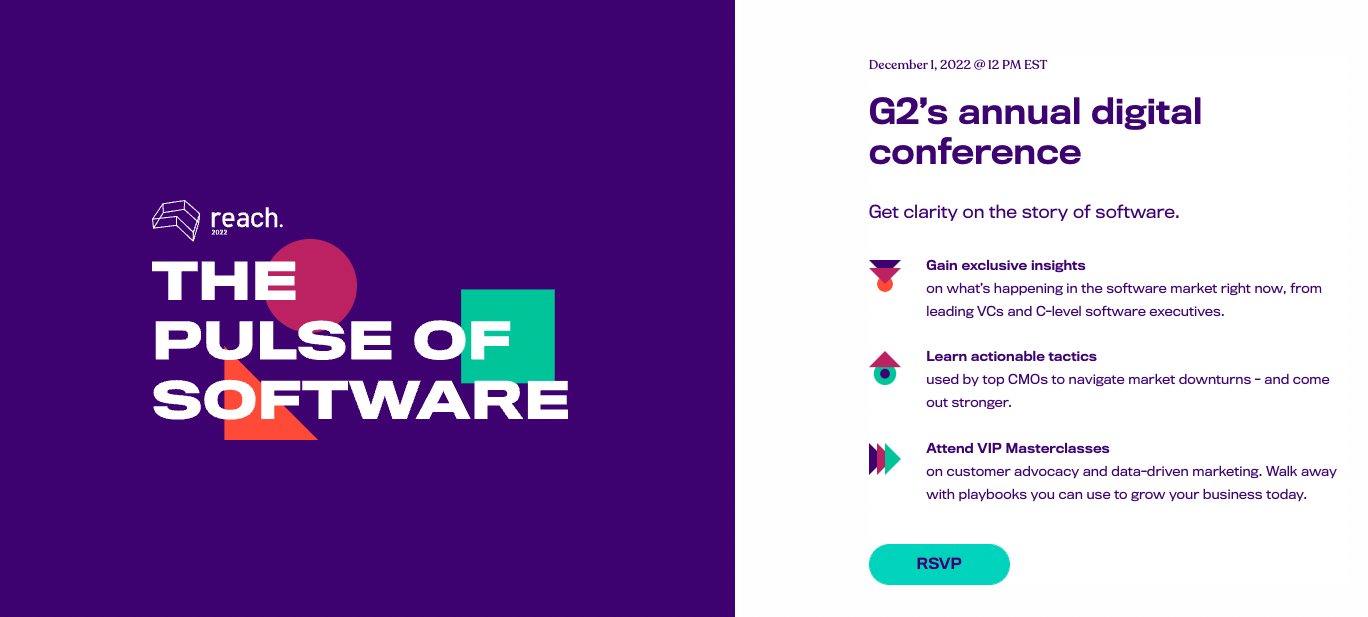
Fuente: Reach 2022
Interactivo
Un tipo de CTA realmente diferente y único es uno que es interactivo y divertido, pero aún así atractivo. Tener una llamada a la acción en forma de cuestionario, encuesta o incluso un juego no es adecuado para todas las marcas, pero una que hace que esto funcione para ellos es Stitch Fix. Como servicio de estilismo personal para hombres, mujeres y niños, Stitch Fix envía a los clientes ropa, zapatos y accesorios directamente a su puerta según las preferencias recopiladas del cuestionario.
Toda la experiencia es única para el cliente, comenzando con completar el cuestionario de estilo.
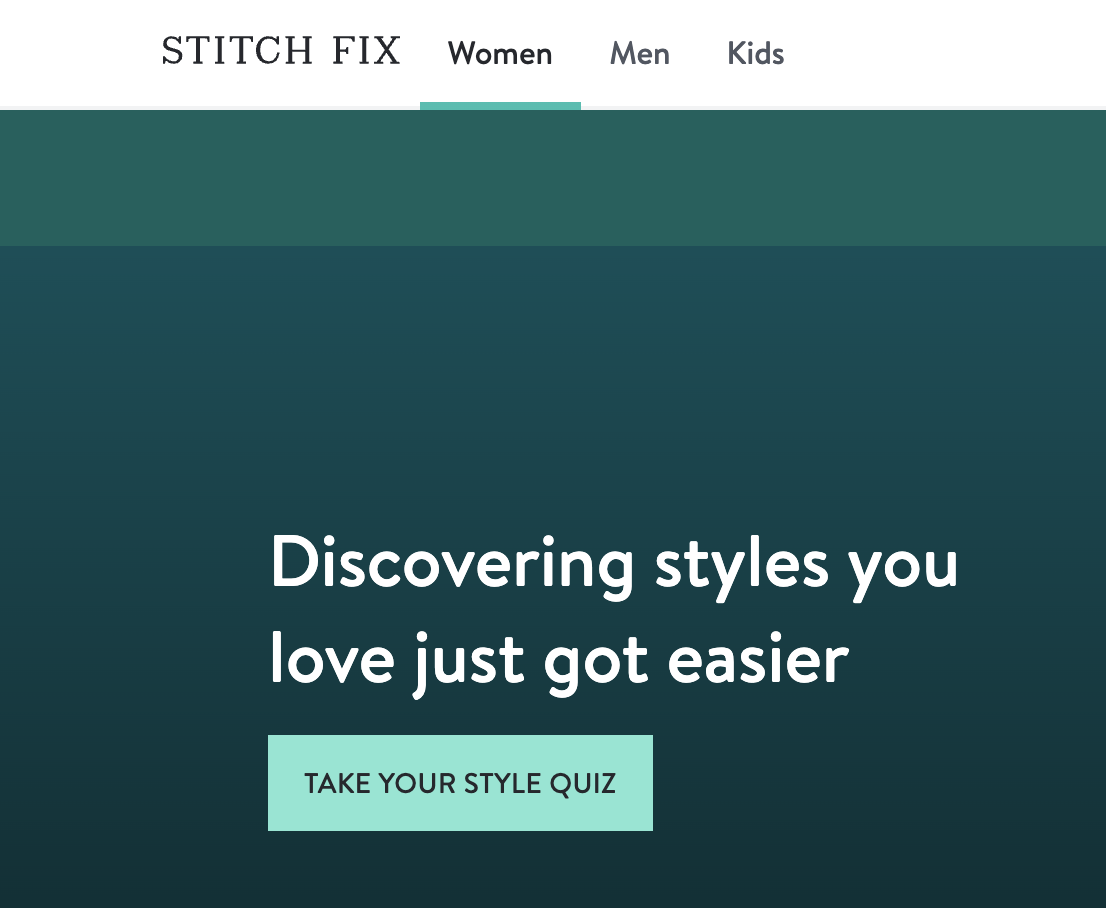
Fuente: Stitch Fix
De manera similar, BarkBox tiene un CTA interactivo en su sitio web, pero en lugar de ropa y accesorios, BarkBox insta a los amantes de los perros a realizar su cuestionario para recibir una caja personalizada de regalos para su perro enviada directamente a su puerta.
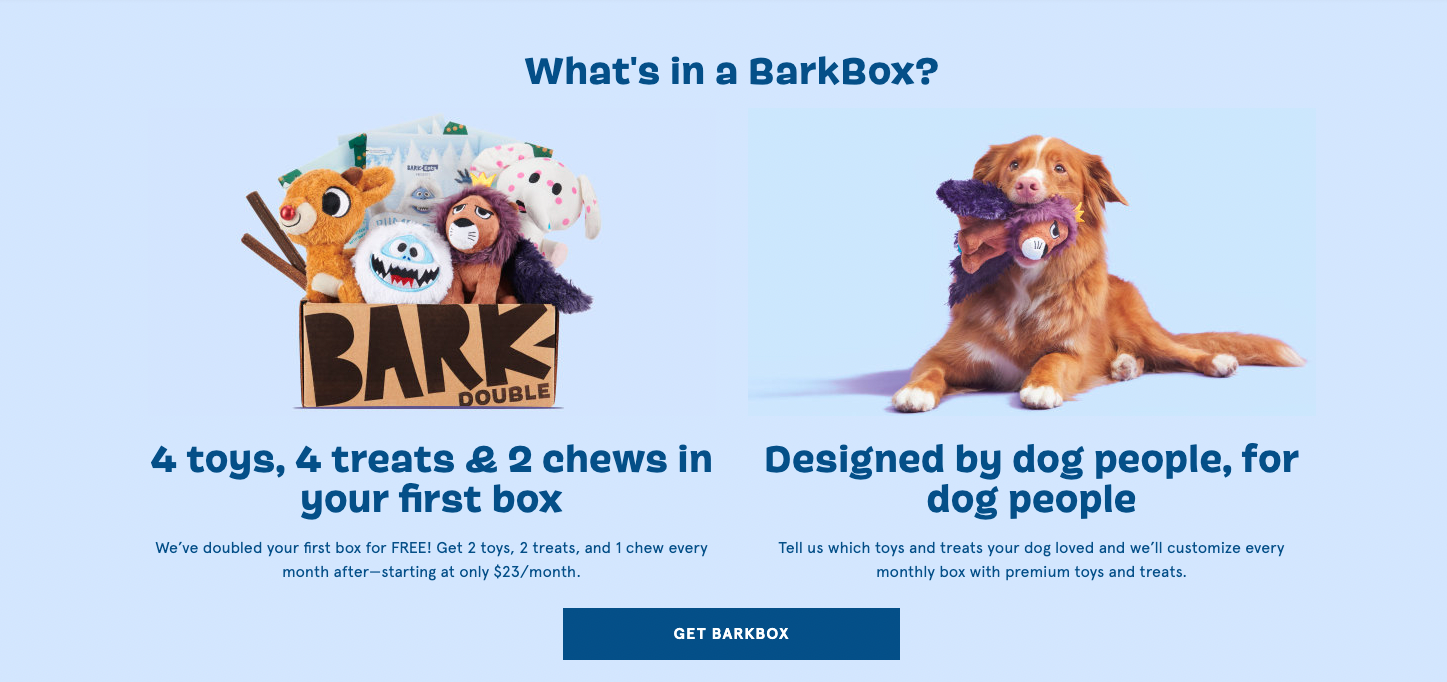
Fuente: BarkBox
Sentido de urgencia
Muchos CTAs se apoyan en un sentido de urgencia para lograr que los espectadores hagan clic. Este tipo de llamadas a la acción se ve comúnmente en anuncios, especialmente en redes sociales. A continuación, verás un anuncio de Instagram de Starbucks con un CTA que inspira urgencia para el Día del Vaso Rojo, una venta de un solo día donde los clientes que ordenen una bebida artesanal de temporada o de otoño recibirán un vaso rojo reutilizable de edición limitada gratis.
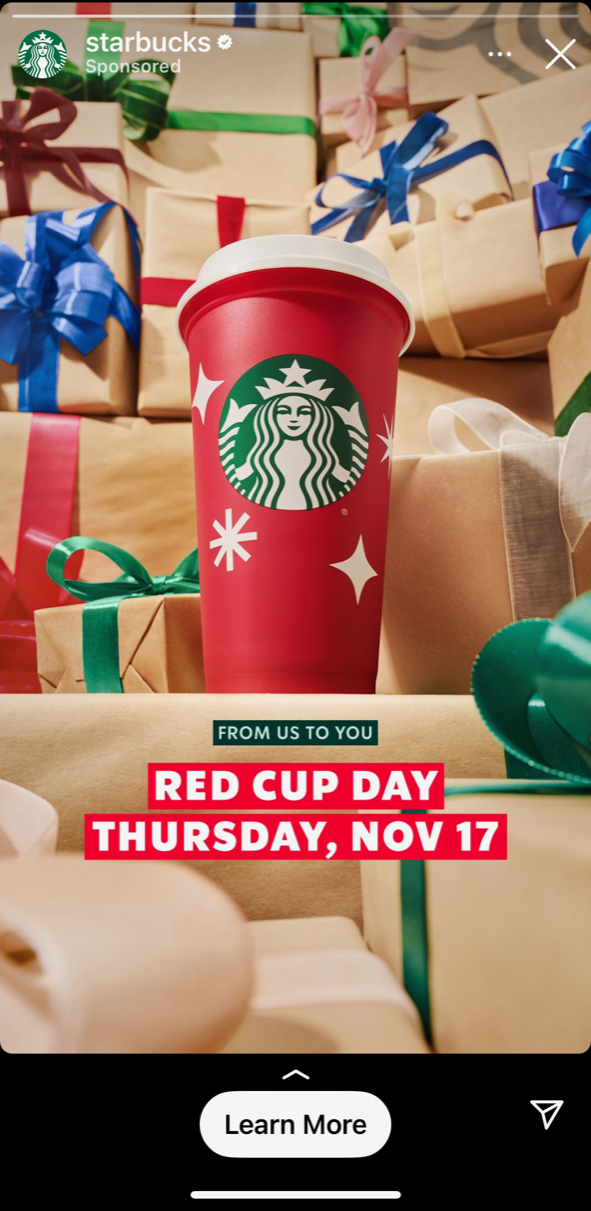
Fuente: Instagram
Es hora de actuar
Si quieres que tus llamadas a la acción funcionen, necesitas ser más creativo que simplemente poner “haz clic aquí” en un botón rojo y esperar que tu sitio web obtenga nuevos clientes potenciales o más tráfico. Aunque hay muchos CTAs que puedes agregar a tu sitio web, asegúrate de hacerlo de una manera que diferencie a tu marca del resto.
No todos los clientes potenciales son iguales. Encuentra software de inteligencia de clientes potenciales para limpiar y verificar la información de los clientes potenciales para ayudar a asegurar que todos tus datos de clientes potenciales sean válidos y útiles.
Este artículo fue publicado originalmente en 2019. Ha sido actualizado con nueva información.

Mara Calvello
Mara Calvello is a Content and Communications Manager at G2. She received her Bachelor of Arts degree from Elmhurst College (now Elmhurst University). Mara writes content highlighting G2 newsroom events and customer marketing case studies, while also focusing on social media and communications for G2. She previously wrote content to support our G2 Tea newsletter, as well as categories on artificial intelligence, natural language understanding (NLU), AI code generation, synthetic data, and more. In her spare time, she's out exploring with her rescue dog Zeke or enjoying a good book.
